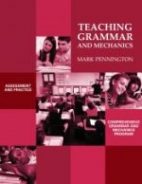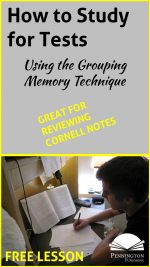Teaching is, by its very nature, experimental. We teachers are just as susceptible to snake-oil sales pitches, fads, and cultural pressures as any professionals. And many of the teaching strategies, movements, and philosophies appear years later dressed up in different clothes. Talk to any veteran teacher of a dozen years or more and the teacher will eventually comment on the dynamic nature of education with statements such as “Been there, done that,” “There’s nothing new under the sun,” What Goes Around Comes Around,” “We tried that back in…”
Teachers are also victims of the bandwagon effect. What’s new is questioned, until certain key players buy in. At that point, many teachers become no-holds-barred converts. We teachers are especially vulnerable to new ideas labeled as “research-based,” “best practices,” or “standards-based.” We could all do with an occasional reminder that one of our primary duties as teachers should be to act as informed “crap detectors” (Postman, Neil, and Weingartner, Charles (1969), Teaching as a Subversive Activity, Dell, New York, NY.).
Following is a list of the educational fads that have come and gone (and sometimes come again) over the last thirty years of my teaching. I’ve bought into quite a few of them and still believe that some of them have merit. The list reminds me to hold on loosely to some things that I currently practice and to be open to change. Cringe, laugh, and be a bit offended as you read over the list. Oh, and please add on to the list, which is in no particular order.
1. Writing Across the Curriculum No one really ever believed that math, art, or music teachers should be spending oodles of time teaching writing.
2. Timers Timers used to keep students on task, pace themselves, track their reading speed.
3. Left-right Brain Strategies Some teachers used to have students place bracelets on their left or right wrists to cue brain hemispheres.
4. Self-esteem Teachers developed lessons to promote the self-esteem of students to increase their abilities to learn.
5. Cultural Literacy E. D. Hirsch, Jr. popularized this movement of shared content knowledge in his influential 1987 book, Cultural Literacy: What Every American Needs to Know. Boston: Houghton Mifflin. Teachers abandoned free-choice novels and chose core novels that inculcated American values.
6. Multi-culturalism This much maligned approach to education influenced many publishers and teachers to include multi-cultural literature.
7. Relevance The practice of choosing curriculum and instructional strategies designed to relate to the lives and interests of students.
8. Clickers Used to track student discussion responses, equitable teacher questioning, and even attendance.
9. Re-learning Early Childhood Behaviors One reading strategy for struggling readers in the 1970s involved re-teaching those remedial readers who never learned to crawl to crawl.
10. Learning Styles I can’t tell you how many learning styles assessments I designed over the years.
11. Experiential Learning Role play, simulations, mock trial.
12. Alternative or Authentic Assessments I once taught an entire year-long sophomore level World History class without giving one traditional paper and pencil test. Think museum exhibits, video productions, interviews, etc.
13. Cooperative Groups Touted as a primary means of heterogeneous instruction in the 1980s.
14. Values Clarification and Moral Dilemmas Two forms of values education that emphasized decision-making and informed moral choices.
15. Gongs Used to focus students’ attention and signal instructional transitions.
16. Critical Thinking Skills Bloom’s Taxonomy, Costa’s Levels of Questioning, et al.
17. Behavioral Objectives and the Madeline Hunter’s Lesson Design Teaching to measurable objectives with connection to prior instruction, guided practice, closure, and independent practice.
18. Standards-based Instruction A movement to identify content standards across grade levels and focus instruction on these expectations. Many state tests were aligned with these standards.
19. Language Experience A reading strategy which used oral language ability to help students read. Teachers copied down student stories and had students practice reading them.
20. Bilingual Education A movement to teach native literacy and celebrate bilingualism in the belief that literacy skills are easily transferred to English.
21. Learn by Doing John Dewey revisited. Gardening and keeping classroom pets were popular recreations of the theme.
22. Cornell Notes Popularized by the A.V.I.D. (Advancement Via Individual Determination), this columnar notetaking strategy originated in the 1950s at Cornell University.
23. Inventive Spelling The practice of guessing sound-spelling relationships to encourage writing fluency. Instruction followed from spelling analysis.
24. Achievement Gap The gap in reading and math achievement between racial subgroups. Later expanded to language and ethnic subgroups.
25. Thematic Instruction Teaching broad-based themes across the curriculum, such as teaching a unit on cooking in which recipes are composed and read, mathematic measurements involving recipe quantities are practiced, the final meal is sketched, using artistic perspective, and the meal is eaten.
26. Time on Task A movement that tried to minimize wasted time, class interruptions, and outside activities (such as assemblies) and maximize minutes of classroom instruction, such as with classroom openers.
27. Whole Language The movement popularized in the 1970s and 1980s that de-emphasized phonics, spelling, and grammar instruction and emphasized reading and writing for meaning.
28. Reading Across the Curriculum (or Content Area) No one really ever believed that math, art, or music teachers should be spending oodles of time teaching reading or that “Every Teacher, a Teacher of Reading.” Despite attempts by the Common Core authors to convince science and social studies teachers to teach and practice reading, the burden remains largely in the hands of ELA teachers.
29. Literacy Circles Also know as centers, the small group activities were designed as independent work stations with some degree of student choice.
30. ADD, ADHD, Epstein Bar, Chronic Fatigue Syndrome, Autism, and Others Difficult to diagnose, these conditions introduced educators to Parent Advocates and mandated classroom interventions.
31. Auditory Processing Deficit Disorders and Visual Processing Deficit Disorders New brain research has validated these learning disabilities, but instructional strategies to address these challenges have a questionable track record.
32. Dyslexia Reading Strategies Reading difficulties have produced a plethora of remedial strategies, many such as colored transparencies have been dubious, at best.
33. Career Education Students were tracked according to career interests.
34. Community Service Students were required to perform hours of community service as part of course or graduation requirements.
35. Tracing Letters in the Sand Those who believe that spelling is a visual process had students memorize the shapes of letters within words by drawing the outline of the letters.
36. Inquiry Education Instruction based upon student questions and interests.
37. Sustained Silent Reading, Drop Everything and Read, et al In class or school-wide, this practice of silent reading is usually based upon student choice of reading materials without accountability and is designed to foster life-long reading.
38. TRIBES, et al Groups of students, mentored by adults, that build relational and supportive bonds within the school setting.
39. Peer Tutoring A practice in which a smarter student is paired with one less smart to teach the latter.
40. Writers Workshop and Six Traits Movements based upon the writing research of Donald Graves and others that emphasize the process of writing, revision, and publication.
41. Problem-Solving Strategies developed to solve difficult problems in collaborative groups.
42. Rubrics Here a rubric; there a rubric. Holistic and analytic scoring guides that purport to de-mystify and objectify the grading process of complicated tasks, such as essays.
43. Manipulatives Learning mathematical concepts through visual models that students manipulate to understand mathematical processes.
44. Metacognition Thinking about thinking. Strategies that teach reflection on the learning process.
45. Prior Knowledge Usually referred to as a pre-reading or pre-writing strategy in which the student “accesses” his or her background or personal experiences to connect to the reading or writing task.
46. Hands-on Learning Project-based instruction that emphasizes concrete learning making or doing.
47. Realia Using “real” objects to scaffold into abstract learning. For example, bringing in a silver necklace to teach what silver and a necklace mean.
48. Tracking and Ability Grouping Permanent or temporary grouped instruction based upon student grades, test scores, or skill levels.
49. Differentiated Instruction and Individualized Instruction Instruction designed according to the diagnostic needs of individual students, frequently involving group work.
50. Multiple Intelligences Popularized by Howard Gardner, this movement described intelligence aptitudes such as interpersonal intelligence.
51. Powerpoint®, Blackboard, Web 2.0, computer literacy skills, SmartBoards, Video Conferencing, ZOOM and more to come.
52. Color Mood Design Teachers draped soothing colored butcher paper (blue or green) over the teacher’s desk to reduce stress. Teachers stopped using red pens to correct papers.
53. Back to Basics A movement to focus more on the three R’s and less on electives.
54. The Five-Paragraph Essay The model essay, consisting of one introductory paragraph, three body paragraphs, and one conclusion paragraph.
55. Multi-sensory Education Using the five senses to teach a concept or skill.
56. Close Reading A decades-old strategy to analyze challenging text, close reading was huge in the years following the Common Core adoption.
*****
Here’s one that won’t be classified to my fads list…

The Science of Reading Intervention Program
The Science of Reading Intervention Program: Word Recognition includes explicit, scripted instruction and practice with the 5 Daily Google Slide Activities every reading intervention student needs: 1. Phonemic Awareness and Morphology 2. Blending, Segmenting, and Spelling 3. Sounds and Spellings (including handwriting) 4. Heart Words Practice 5. Sam and Friends Phonics Books (decodables). Plus, digital and printable sound wall cards and speech articulation songs. Print versions are available for all activities. First Half of the Year Program (55 minutes-per-day, 18 weeks)
The Science of Reading Intervention Program: Language Comprehension resources are designed for students who have completed the word recognition program or have demonstrated basic mastery of the alphabetic code and can read with some degree of fluency. The program features the 5 Weekly Language Comprehension Activities: 1. Background Knowledge Mentor Texts 2. Academic Language, Greek and Latin Morphology, Figures of Speech, Connotations, Multiple Meaning Words 3. Syntax in Reading 4. Reading Comprehension Strategies 5. Literacy Knowledge (Narrative and Expository). Second Half of the Year Program (30 minutes-per-day, 18 weeks)
The Science of Reading Intervention Program: Assessment-based Instruction provides diagnostically-based “second chance” instructional resources. The program includes 13 comprehensive assessments and matching instructional resources to fill in the yet-to-be-mastered gaps in phonemic awareness, alphabetic awareness, phonics, fluency (with YouTube modeled readings), Heart Words and Phonics Games, spelling patterns, grammar, usage, and mechanics, syllabication and morphology, executive function shills. Second Half of the Year Program (25 minutes-per-day, 18 weeks)
The Science of Reading Intervention Program BUNDLE includes all 3 program components for the comprehensive, state-of-the-art (and science) grades 4-adult full-year program. Scripted, easy-to-teach, no prep, no need for time-consuming (albeit valuable) LETRS training or O-G certification… Learn as you teach and get results NOW for your students. Print to speech with plenty of speech to print instructional components.
SCIENCE OF READING INTERVENTION PROGRAM RESOURCES HERE for detailed product description and sample lessons.
Grammar/Mechanics, Reading, Spelling/Vocabulary, Study Skills, Writing
achievement gap, alternative ssessments, auditory processing, authentic assessments, AVID, behavrioral objectives, brain strategies, collaborative learning, cooperative groups, Cornell Notes, critical thinking skills, cultural literacy, differentiated instruction, dyslexia, educational fads, experiential learning, hands-on learning, inquiry education, inventive spelling, language experience, learning styles, math manipulatives, Meadeline Hunter, metacognition, multi-culturalism, multi-sensory education, peer tutoring, phonemic awareness, prior knowledge, rigor and relevance, self-esteem, standards-based, sustained silent reading, thematic instruction, time on task, tracking, TRIBES, values clarification, visual processing, whole language, writers workshop, writing across the curriculum












